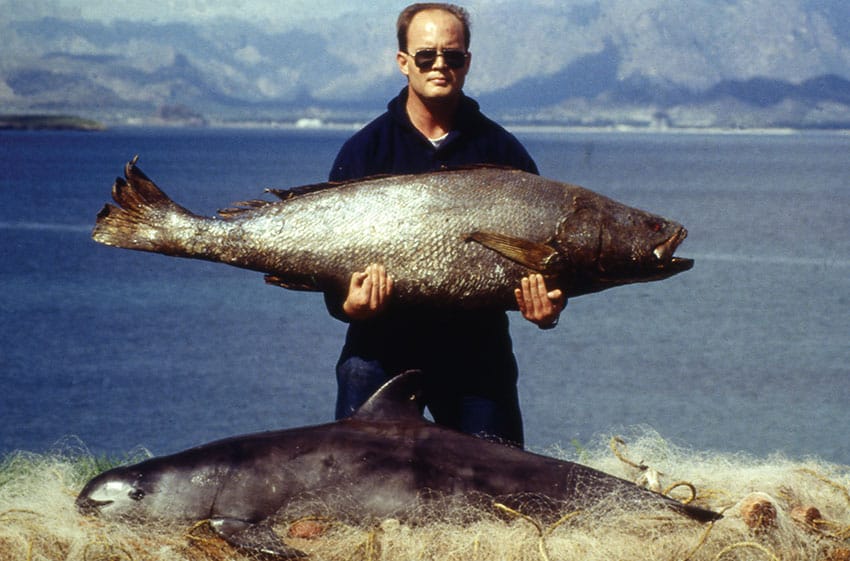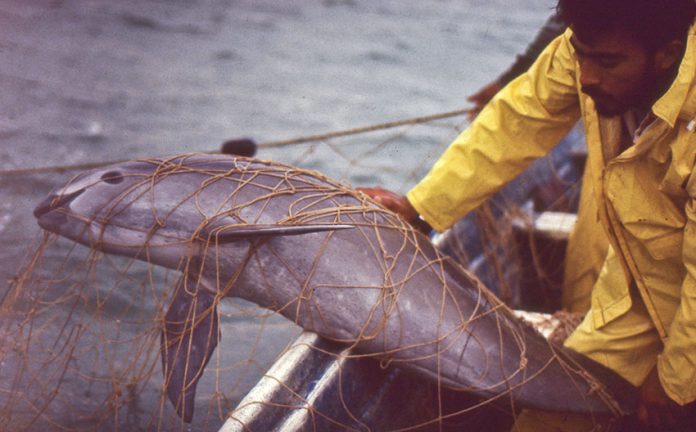There is no other place on planet Earth where pelicans carry a flashlight embedded in their foreheads and fly low to brighten the nights of the fishermen that get up before the sun rises to retrieve their nets and check their fishhooks.
You probably don’t believe it, but it is said that the light comes from bioluminescent algae, dinoflagellates, that cling to their feathers after they have dived for fish in the sea. My compadre, a fisherman in El Golfo de Santa Clara, Sonora, in northwestern Mexico told me precisely that, and I have no doubt whatsoever it is true.
And there is no other place on planet Earth where a fish queen emerges from the sea, stops breathing for several minutes, hikes a half meter across the beach as the high tide withdraws, and then buries herself in sand to lay eggs.
You probably don’t believe this either. My professor, an ichthyologist from Tucson, Arizona, told me exactly that, and I also believe him. Up to 10 males curl around those females, ejecting their spermatozoa to ensure fertilization.
The fish is called a grunion, or pejerrey (“fish king”) in Spanish, one of only two fishes in the world that jump out of the water to pursue this exotic reproductive ritual, the other one being its cousin, another grunion that only lives in California, that huge expanse of golden coast that was once Mexican land, but it is now American.
In El Golfo de Santa Clara grunion engage in a furious two-hour beach bacchanal, the teeming festivity reaching more than 350 fish per square meter. It occurs just after the full and new moons, from January to March, year after year since the dawn of time.
Thousands of birds of more than 30 species go crazy as part of a bean feast of royal fish and eggs – gulls, double-crested cormorants, terns, pelicans, and sandpipers that rely on the grunion’s wildness and successful sand-beach reproductive performance.
El Golfo de Santa Clara is the most important place in Mexico where spring migrating shorebirds replenish their energy before flying back north.
It is the same place where I met El Pipilo, El Peludo, and many other fishermen. Where my compadre El Chiruli and my godson Macario were born, both of whom I have neglected but haven’t forgotten. A place where, many years ago, El Wafles, El Charly and many other enthusiastic students who lacked nicknames were initiated into the strange business of searching for scientific knowledge.
It is a unique, warm and humid armpit in the Sonoran Desert, between the Baja Peninsula and “mainland” Mexico where the mighty Colorado River once drained snowmelt waters from the Rocky Mountains, the river whose mouth was dried by the damned dams in the United States. The same river that, 173 years ago, flowed through almost half of Mexico – Colorado, Utah, Arizona, Nevada and California – until our northern neighbor seized it in 1848.
The U.S. had already grabbed from Mexico the whole of New Mexico and parts of Wyoming, Kansas, and Oklahoma — a total of 2 million square kilometers which were added to Louisiana, which was purchased from Napoleon, and Florida whose property rights were ceded by Spain.

The upper Gulf of California is a land of marshes, bays, beaches, estuaries, dunes and a dying delta embedded in a yellow desert, a vermillion sea, and the blue skies of the Biosphere Reserve of the Upper Gulf of California and the Colorado River Delta. It is part of the islands and protected areas of the Mar de Cortés, one of the astounding 53 world heritage sites that UNESCO considers as being in great danger.
There are enchanting stretches of land baptized in honor of saints — El Golfo de Santa Clara and San Felipe — in a region first explored by Europeans 340 years ago, by the soon-to-be canonized Father Eusebio Kino.
The two fishing villages, initiated by fearless adventure seekers, have survived 90 years of solitude and a mayhem of recurring seaside gold rushes, periodic episodes of legal and illegal fishing of totoaba, sharks and rays, shrimp, corvina, croaker, sierras, and sea cucumbers, all of which were responsible for the birth, flourishing, and then near collapse of El Golfo de Santa Clara, now home to 4,000 Mexicans.
Today, the upper Gulf of California and its inhabitants are haunted by poverty and the despair born of decades of governmental neglect and mismanagement, the lack of economic opportunities and the rampant corruption that have fed the overexploitation of their rich natural resources and destroyed their livelihoods. It is a crisis that has decimated its unique biological diversity and brought many endemic species to the brink of extinction.
Among them is Ridgway’s rail (Yuma), a bird that nests in the no-longer-lush delta marshes. And the desert pupfish, that lives in hot water (reaching 38-46 C) similar to the waters where his Chihuahuan cousin and the world’s champion of spa life, the Julimes pupfish, leads a happy life. And the vaquita, a porpoise that has transmuted into the elf that local inhabitants have long viewed as a fairy-tale creature; one that is no longer seen at all.
The upper Gulf of California has become a lawless confluence of land and sea where the ultimate gold rush – drug trafficking – has arrived to become the last nail in the coffin of this uncommon region.
Many Mexican and American biologists and conservationists have passed through El Golfo de Santa Clara over the last half a century. All of them brought something, and all of them took a great deal away with them.
Some lost their minds longing for that other dangerous gold rush: the quest for knowledge. To all I warmly dedicate these first lines of 2021.
Omar Vidal, a scientist, was a university professor in Mexico, is a former senior officer at the UN Environment Program, and former director-general of the World Wildlife Fund–Mexico.
